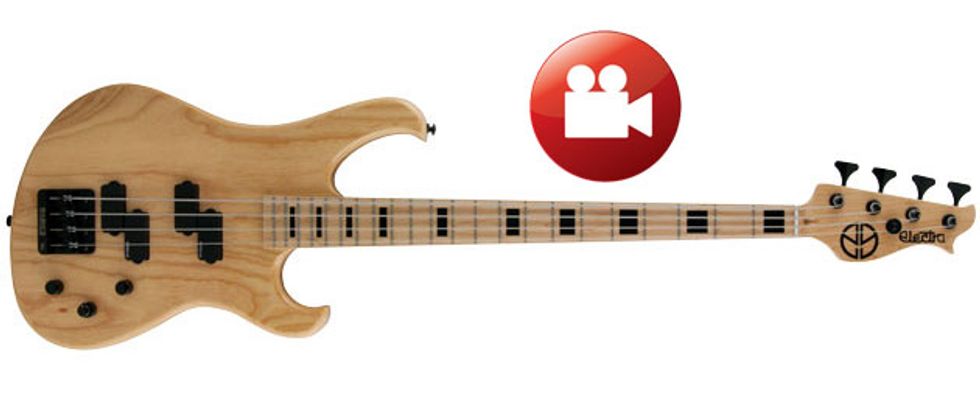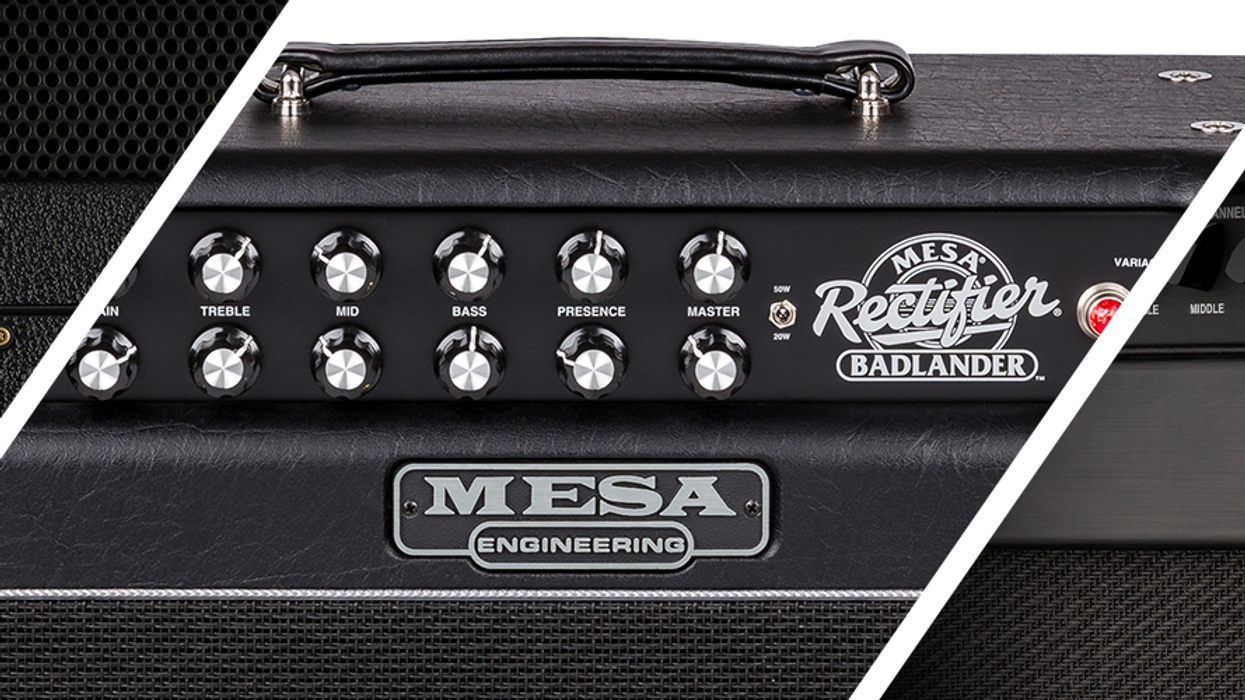If you hadn’t noticed, there’s a trend in our industry: Several wonderfully funky companies are back in business, their new owners having purchased the rights to manufacture new instruments under the old names. One such recently reborn company is Electra.
Out of the (Swamp) Ash
Some of you may recall the original Electra Phoenix, which boasted interesting design features, but wasn’t necessarily a humongous hit with the masses. With its many modern updates, the new Phoenix isn’t a true reissue, but this blonde beauty shined from the moment I opened its padded gig bag. The swamp ash body, whose general style is inspired by the original, has nice grain pattern visible through a natural finish. (A black-finished, alder-body version is also available.) The maple neck has a 34"-scale maple fretboard and classy black-block inlays. The distinctive Electra headstock has been modified slightly, and Hipshot Ultralight tuners line up topside over the Electra logo.
I dug the feel of the redesigned body. The original was a little squat and compact, and the changes make the bass more ergonomic. An elongated body improves the balance. The deeply scooped lower horn makes the upper frets wonderfully accessible. The belly scoop and forearm contours help keep the Phoenix comfy, balanced, and surprisingly light.
The passive EMG PHZ pickups were designed specifically for this bass. The 9-volt-powered EMG BT preamp includes a volume knob, a stacked treble/bass tone knob, and a 5-way rotary pickup selector that cycles through several series and parallel configurations.
Ratings
Pros:
Well-built. Many tones. Comfortable.
Cons:
The maple neck/fretboard snap can be too much for some. Level changes between series and parallel pickup configurations.
Tones:
Playability/Ease of Use:
Build/Design:
Value:
Street:
$999
Electra
electraguitar.com
Passive/Aggressive
Unplugged, the Phoenix has wonderful resonance, with nice maple-neck snap and impressive sustain, thanks in part to the Babicz full-contact bridge and unique 4-bolt heel design, with the screws residing inside metal bushings.
I fired up an Eden WTX-500 and matching 115 cabinet with the amp’s EQ set flat. The rotary control’s first position—the neck’s P-style pickups in series—was a great starting point. With the bass’s EQ flat, the tone has a modern smack—not at all what I expected from the passive P-style setup. I then dimed the low EQ for a tone that was big and even in all registers—a more P-like, yet decidedly modern sound.
A level drop in position 2 (inside coils in parallel) necessitated another bass bump. Here, the Phoenix favored a pick, and I needed to play harder to reach the setting’s full potential. Position 3 (both pickup sets in series) is the “money” setting, offering the best the pickups have to offer. I still found myself boosting the bass for a bigger tone. (The tone might be mellower on the black-finished model’s ebony fretboard.) Here the Phoenix handled aggressive fingerstyle playing with ease. Pop and slap players will love the big tone, especially paired with the Phoenix’s super-fast neck. Pick users can also expect great results here, no matter how powerfully or delicately they play.
Position 4 places the two outside coils in parallel, emulating a Music Man humbucker. The result falls a bit short of a full-on MM tone, though the top-end bite and familiar punch makes this setting useful. Finally, position 5 places the two bridge pickups in series, bringing the level back up and generating bridge-pickup bite that can stand out in a mix.
The Verdict
The Korea-made Phoenix rivals many U.S. basses and occasionally surpasses them. The Swiss Army approach to pickup configuration works well for anyone who needs several bass tones at the ready. The Phoenix probably won’t replace your trusty P or Music Man, but the this bass isn’t trying to be something it’s not. If you need a lot of tonal variation from one instrument at a reasonable price, consider this bird of many colors.
Watch the Review Demo:








![Rig Rundown: Russian Circles’ Mike Sullivan [2025]](https://www.premierguitar.com/media-library/youtube.jpg?id=62303631&width=1245&height=700&quality=70&coordinates=0%2C0%2C0%2C0)

















